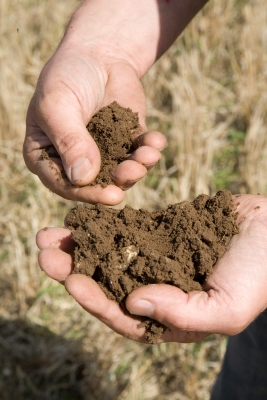 Fertiliser prices continue to be volatile and the only way appears to be up for the input market, so accurate soil sampling and analysis of the results are an invaluable tool, helping farmers make informed decisions on where and how to use expensive but vital resources.
Fertiliser prices continue to be volatile and the only way appears to be up for the input market, so accurate soil sampling and analysis of the results are an invaluable tool, helping farmers make informed decisions on where and how to use expensive but vital resources.
With a basic P and K application for a wheat crop now costing well over £70/ha we have some very expensive decisions being taken. Without sampling, the margin for error either through the application of nutrients where they are not needed, or the neglect of areas crying out for them, is simply too high.
Of course, accurate sampling reveals both the areas of the field that need more product and those that need less. Without sound data, based on accurate sampling for each particular field, making judicious input decisions is very difficult, if not impossible. It's easy to see how incorrect applications could be made.
However, with regular soil sampling and careful interpretation results can be optimised. A brief review of the soil sampling methods available shows that precision farming offers potential for the best results:
- Traditional - Taking one soil sample to represent the whole field, typically 25 cores taken as the sampler walks in a 'W' pattern across the field
- Traditional - Taking one soil sample to represent a sub-division of the field, for example splitting the field into the two or three main soil types. Typically a 'W' pattern is taken across each soil type
or, - The modern precision farming approach - Used by the team at SOYL, with very detailed sampling of at least one soil sample location in each hectare made up of 16 sub samples to give very accurate results.
Mr Parrington recommends that GPS soil-sampling is carried out one year in every four and a set of recommendations is created for each year over the four-year life of the maps. The full nutrient management service offered by SOYL includes all initial sampling, lab costs and maps, and four years' advice and support, including annual fertiliser plans, application maps and files for a GPS spreader.
Data gathered by team at SOYL shows that at current input prices a precise approach will pay for itself with just a 5% change in fertiliser policy, a figure that over 90% of the farms SOYL has advised have achieved. Equipment purchased as part of the initial investment is then available on farm to unlock further benefits through variable seed rates, nitrogen, growth regulators and slug pellet application.
The implications of not conducting thorough analysis in terms of loss of margin, quality or wasted nutrients are huge and something that can now be easily avoided with the technology we have available.
To arrange a consultation with a member of the SOYL team, contact them today.









